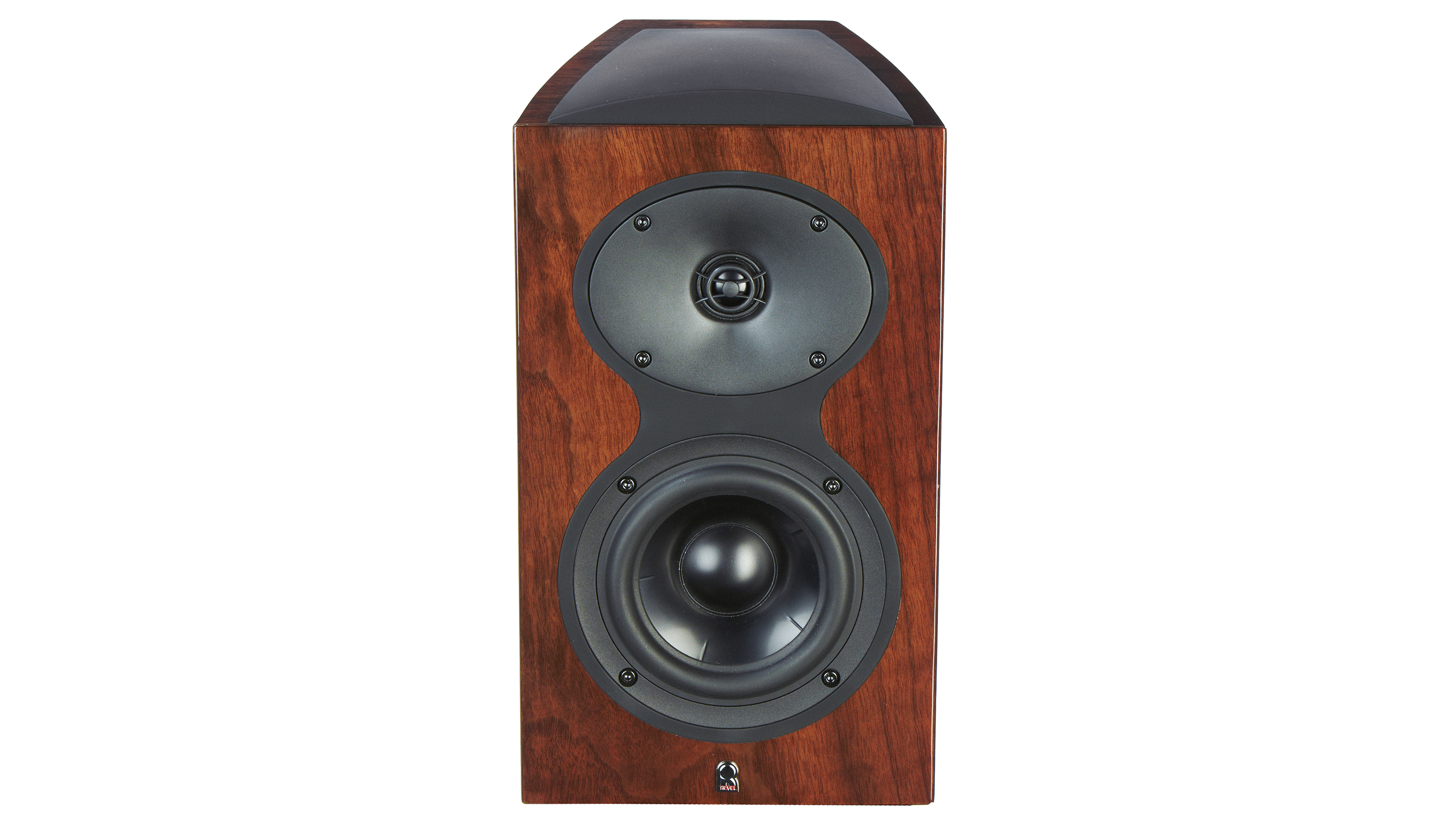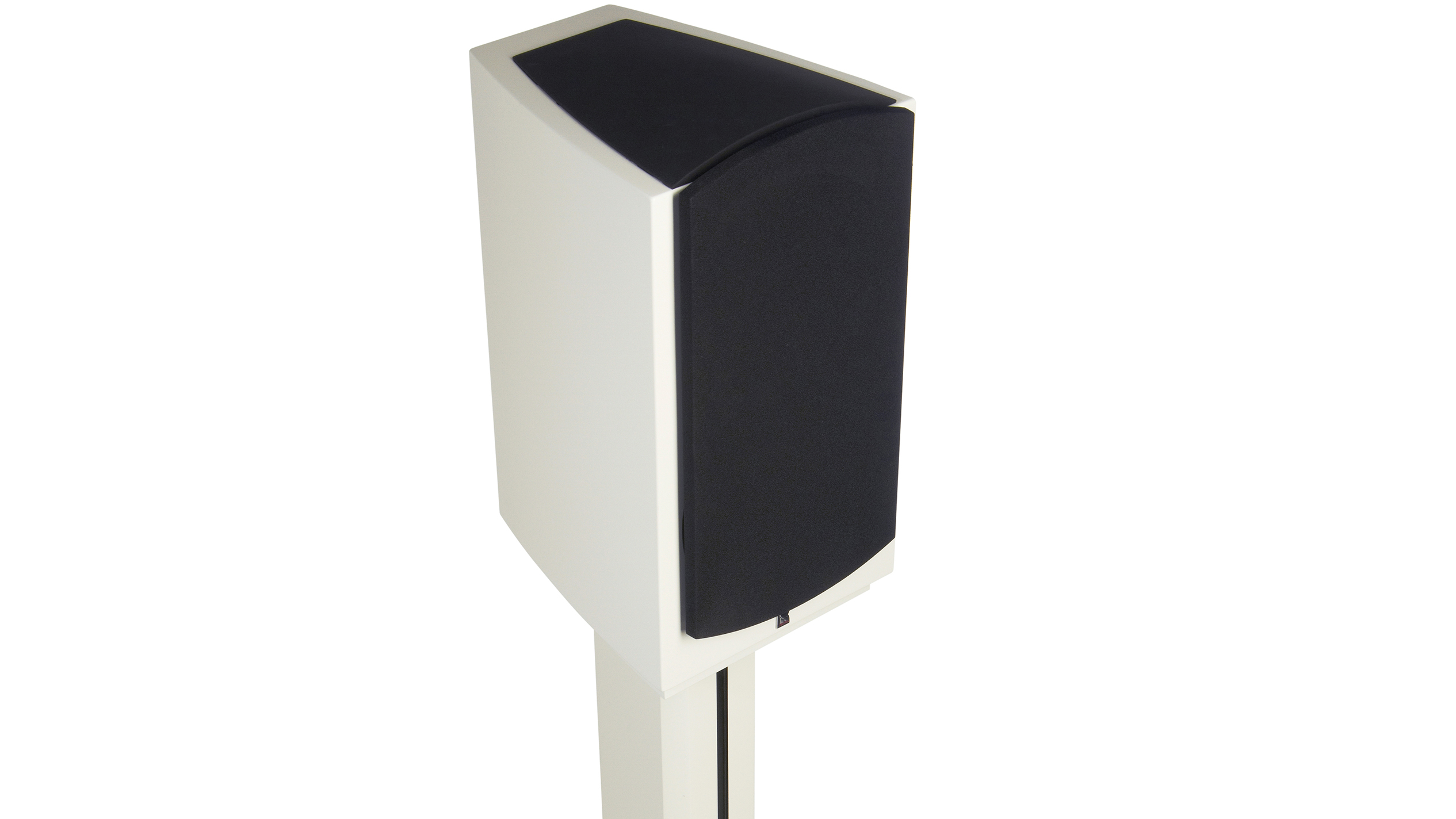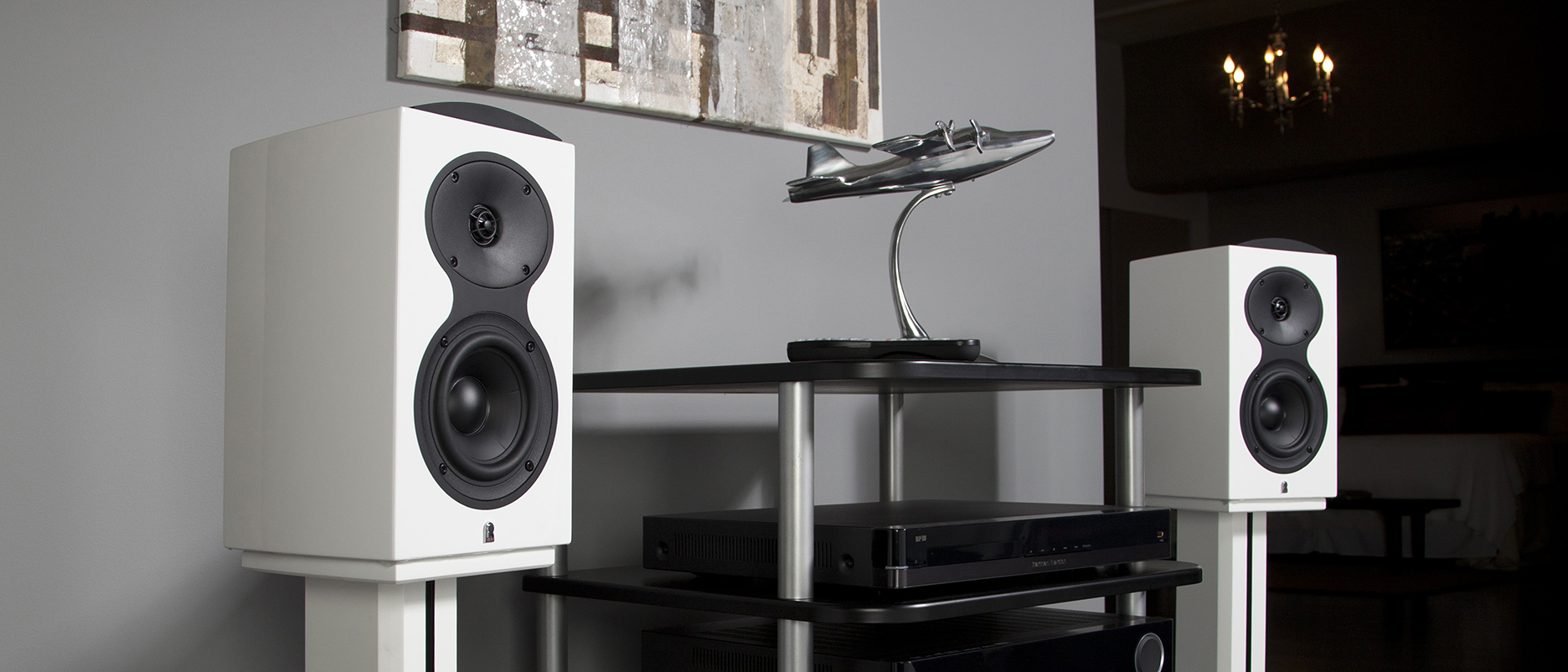What Hi-Fi? Verdict
If you're looking for a pair of accurate monitors for your music studio then the M105 loudspeakers from Revel will do a fantastic job. They'll also sit just as well in your loungeroom listening setup or home theatre array, but you'll need to buy the stands separately.
Pros
- +
Monitor accuracy
- +
Stunning sound
- +
Superb finish
Cons
- -
Low-ish sensitivity
- -
Stands not included
Why you can trust What Hi-Fi?

This review and test originally appeared in Australian Hi-Fi magazine, one of What Hi-Fi?’s sister titles from Down Under. Click here for more information about Australian Hi-Fi, including links to buy individual digital editions and details on how to subscribe.
Revel is the brand-name applied to high-end loudspeakers made by the giant conglomerate Harman International (which is itself an independently-controlled subsidiary of Samsung).
We mention this specifically because Harman is also the company behind two of the world’s best-known and highly-regarded hi-fi loudspeaker manufacturers: JBL and Infinity, which not only puts loudspeakers made by Revel on a pedestal, but also means that Revel’s engineers have access to all the same R&D as the engineers for JBL and Infinity, as well as to all the same manufacturing facilities.
Equipment
When Revel introduced the original ‘Performa’ series in 1999, it was the first time that the company’s premium metal diaphragm drivers had become available on any loudspeaker other than Revel’s flagship ‘Ultima’ Series models. Two different alloys were used: aluminium for tweeter domes and aluminium/magnesium for midrange and bass driver cones.
The Performa2 Series, introduced in 2003, saw the addition of waveguides to the tweeter diaphragms. The Performa3 Series, of which the M105 is a part, introduced new tweeters and a new generation of wave-guides.
In fact the Performa3 Series was so successful for Revel that it added the PerformaBe Series to its line-up in 2018 as a mid-way point between the Performa3 Series and the Ultima Series.
The PerformaBe Series saw a switch in the metal from which the tweeters were being made from aluminium to beryllium (‘Be’ being the abbreviation used for this metal on the Periodic Table of Elements) and the pure metal cones of the midrange drivers and bass drivers for a new composite material called DCC (Deep Ceramic Composite) where the aluminium cone is treated with an electrolytic oxidation process that creates a ceramic coating on both its sides.
The resulting ceramic/metal/ceramic sandwich provides constrained layer damping that pushes cone break-up modes outside the passband, so the driver can deliver ideal pistonic motion throughout its operating range.
The latest hi-fi, home cinema and tech news, reviews, buying advice and deals, direct to your inbox.
The 25mm aluminium-domed tweeter in the M105 has Revel’s newest version of the waveguide. Although the Series’ model number (3) would suggest three generations of evolution we think this is actually the sixth generation for the waveguide itself, because it is used on other Series made by Revel, and it evolved there as well.
The waveguide acts as physical protection for the tweeter, but its real purpose is to ensure that at the crossover frequency, the off-axis dispersion of the tweeter is similar to that of the off-axis dispersion of the bass/midrange driver.
If you look carefully at the M105’s cone you’ll see not only the quality of the black anodising on its surface but also that the cone has five small ‘ribs’ pressed into its surface that extend part-way from the periphery to the large (45mm diameter) central dust-cap.
The primary purpose of ribbing on any surface is to increase the rigidity of that surface, and that’s exactly what is taking place here, with Revel saying that in this case, the increase in rigidity enables the cone to “achieve ideal, piston-like behaviour, eliminating a major source of resonances that are audible in most loudspeakers.”
Revel says that it uses high-order crossovers in the Performa3 M105. The ‘order’ of the crossover dictates how effectively the crossover prevents frequencies that a particular driver is not intended to reproduce from reaching that driver. In a two-way design, it means that high frequencies should be prevented from reaching the bass/midrange driver, and low frequencies should be prevented from reaching the tweeter.
Because the Performa3 M105’s crossover frequency is at 2.3kHz, this means only frequencies above 2.3kHz should go to the tweeter and all frequencies below 2.3kHz should go to the bass/midrange driver. If a low-order crossover were used, say 3dB per octave, the bass-midrange driver would be delivering sound at 4.6kHz that was almost as loud (just 3dB quieter) as the sound being produced by the tweeter.
If, however, a high-order (24dB/octave) crossover were to be used, the output of the woofer at this same frequency would be 24dB lower than that of the tweeter – so low in level that it would be inaudible. Revel doesn’t actually specify the slopes of the crossover in the M105, but the components used in the M105’s crossover network (four inductors, three iron-cored, one air-cored, four capacitors and three resistors) would suggest slopes of at least 24dB/octave.

While the M105 might not be able to use the same quality drivers as found in Revel’s PerformaBe and flagship Ultima2 models, it can – and does – use cabinets made from the same materials and formed in the same shapes. When we say ‘shapes’, it’s because if you look closely, you’ll see that the sides of the Performa3 M105’s cabinet are curved rather than flat, and the cabinet itself is also wider at the front than it is at the back.
Although they’re more difficult to manufacture, cabinets with curved sides are inherently stiffer than cabinets that use flat panels, and also have fewer internal resonances than conventional ‘box-shaped’ cabinets. The cabinets also have internal bracing to reduce the possibility of enclosure-induced colouration.
The cabinets are so beautiful and the drivers so well-integrated into them that you may wish to use the M105s without the grilles with which they’re supplied, in which case you won’t see any mounting plugs or sockets, because the grilles attach magnetically.
Although the Revel M105s can be shelf- or wall-mounted, they’re designed to be used on stands, specifically the Performa3 ‘M’ stands, which are 635mm high and intended for use with the M105 and M106 designs, the M106 being a slightly larger version of the M105 with a slightly larger (165mm) bass/midrange driver.
We should note that Revel expects that some buyers will use the M105s in a multi-channel home theatre system, probably by using M105s in the surround channels as well (or, if you want dipolar speakers, a pair of S206s). So it also makes a dedicated centre channel (C205) that uses the same bass/midrange driver as the M105s, though of course two of them, rather than just the one. There are also two powered subwoofers in the Performa3 range – the B110, which has a 10-inch bass driver, and the B112, which has a 12-inch bass driver.
Listening sessions
Although the unusual shape of the Revel Performa3 M105 has many acoustic advantages, it does have the disadvantage that it decreases the volume of the cabinet over a standard rectangular cabinet of the same width and depth, which in turn limits the low-frequency extension of the driver Revel is using, so that this same driver, in a cabinet of larger volume, would have more bass extension.
That proved to be the case in our listening sessions, because although the M105’s bass was outstandingly neutral, free of unwanted distortion and stayed very clean even at higher listening levels, the very lowest musical octave was a tad lower in level than you’d hear from, say, a pair of Revel F206s or F208s… or an M106.
You will get maximum output if you do not use the port plugs supplied with the speakers and if you position the speakers fairly close to a rear wall, in order to maximise the contribution from their rear-firing bass reflex ports. This is the position we used when auditioning the Performa3 105s for the purpose of writing this review.
We must admit to being unsure what the ‘M’ stands for in the M105s’ model number, but only a few seconds after we’d started playing music through them, we would certainly have placed serious money on it standing for ‘Monitor’, because these small standmounters would have to be one of the most accurate, most revealing loudspeaker designs we have ever heard. If we were monitoring music in a recording studio and wanted to hear exactly the sound that had been captured, these Revel Performa3 M105s would be our tools of choice.
Listening to Seratonin, from If I Could Make It Go Quiet by Girl in Red (Marie Ulven), the Revels delivered the incredible richness of the soundfield with stunning realism. The vocal trill at 1:03 that’s blurred by many speakers was a true trill, and the cleanliness of the multi-tracked echoed vocals against the deliberately-distorted instrumentation, as well as the superb spoken close-out, are all handled masterfully well by these small speakers. So well, indeed, that they sound much, much larger than they are.
Wanting a more natural vocal and acoustic instruments to evaluate the midrange, we played Valerie June’s lovely album The Moon and Stars. Listening to her distinctive voice on Fallin’ we were assured that the M105s deliver the midrange flawlessly, not only because of the perfect balance of her voice, but also because of the guitar sound. Just listen to the clarity of the strings, and how you can hear the guitar body. There’s also all this and more on the lovely track You and I.
We tested out the high frequencies with one of the year’s best albums, Obviously, the latest studio album from old-timers Lake Street Dive. The title is extracted from the album’s intro (and best) track, Hypotheticals, which also finishes it, as an edit. The Revels delivered all the highs with a silky smoothness that let us hear the true sound of the cymbals, clap-sticks, guitar, uke, piano and organ. They also delivered the sound of Bridget Kearney’s acoustic bass so cleanly that we raised our eyebrows with surprise. So yes, Virginia, small loudspeakers can deliver low bass with amazing realism.

Verdict
We’re going to conclude this review by reprising what we said earlier: that the Revel Performa3 M105s are one of the most accurate, most revealing loudspeakers we have ever heard. If you want a pair of monitor speakers for your studio, look no further. But if you want a pair of great loudspeakers for your home, they’ll excel in that application as well.
Australian Hi-Fi is one of What Hi-Fi?’s sister titles from Down Under and Australia’s longest-running and most successful hi-fi magazines, having been in continuous publication since 1969. Now edited by What Hi-Fi?'s Becky Roberts, every issue is packed with authoritative reviews of hi-fi equipment ranging from portables to state-of-the-art audiophile systems (and everything in between), information on new product launches, and ‘how-to’ articles to help you get the best quality sound for your home.
Click here for more information about Australian Hi-Fi, including links to buy individual digital editions and details on how best to subscribe.


